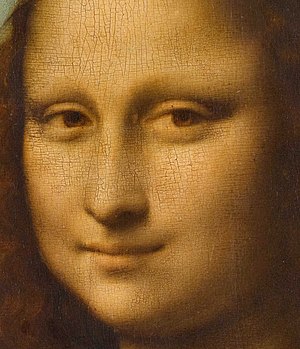Sfumato

Sfumato (English:
According to the theory of the art historian
Technique
The technique is a fine shading meant to produce a soft transition between colours and tones, in order to achieve a more believable image. It is most often used by making subtle gradations that do not include lines or borders, from areas of light to areas of dark. The technique was used not only to give an elusive and illusionistic rendering of the human face, but also to create rich

Practitioners
Besides Leonardo and his followers, the
References
- ISBN 0-313-24658-0.
- ISBN 978-0-521-45733-0.
- ^ "Four Canonical Painting Modes by APA".
- ISBN 0521624452, 9780521624459, google books
- ^ "Sfumato". Art Painting Artist.
- ^ Dobrzynski, Judith H. "'Bellini and Giorgione in the House of Taddeo Contarini' Review: A Renaissance Reunion" The Wall Street Journal, December 27, 2023.
External links
- Leonardo da Vinci, master draftsman, exhibition catalog fully online as PDF from The Metropolitan Museum of Art, which contains material on this technique (see index)
